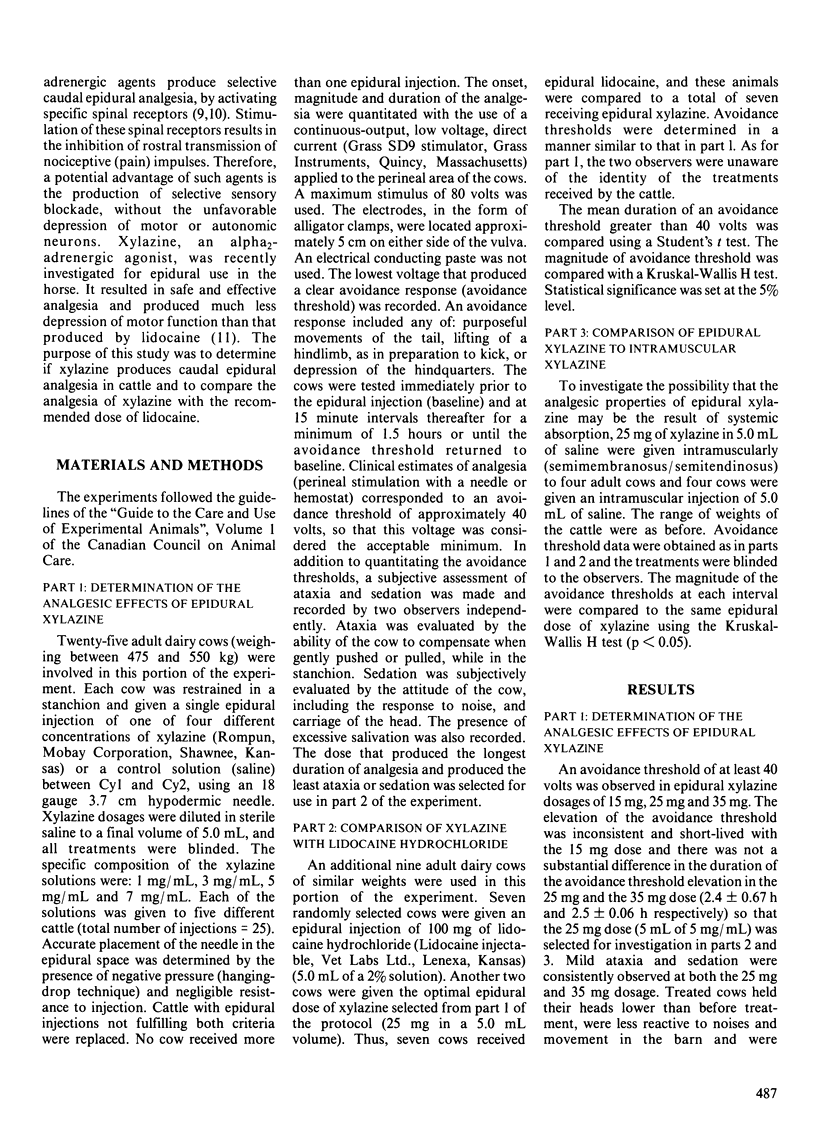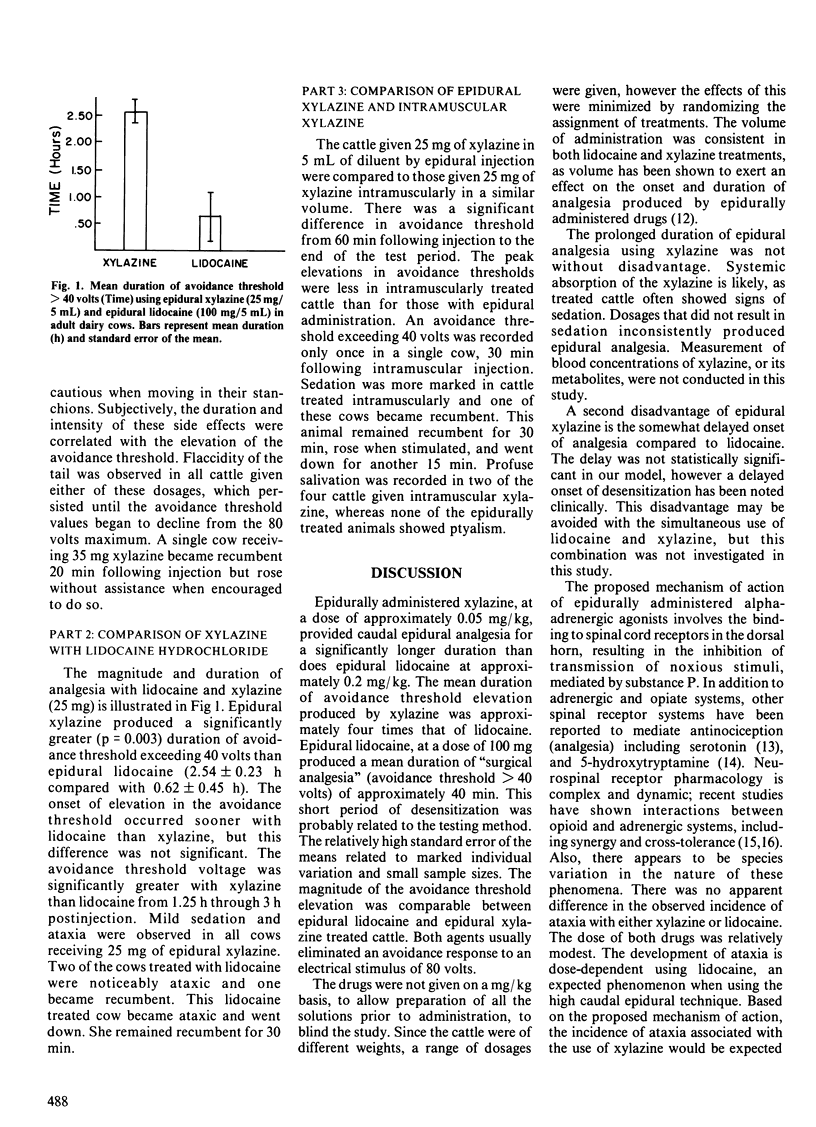Abstract
Each of 25 mature Holstein cows were given a single 5 mL epidural injection of one of four different concentrations of xylazine or saline. The onset, magnitude and duration of caudal epidural analgesia was quantitated with the use of a low voltage DC current applied to the perineal area. The dose that produced the longest duration of analgesia and produced the least ataxia or sedation was approximately 0.05 mg/kg (25 mg in 5 mL diluent). The analgesia produced by this xylazine dose was compared to a standard dose of epidural lidocaine (100 mg/5 mL) by the same method. To investigate the role of systemic absorption in the production of epidural analgesia, the previously utilized epidural xylazine dosage was given intramuscularly to four adult cows. Analgesia was quantitated as before and the results compared with epidural xylazine. Epidural xylazine produced a significantly greater duration of analgesia, as measured by this model, than did epidural lidocaine. Xylazine, given epidurally, produced greater perineal analgesia than did xylazine given intramuscularly.
Full text
PDF



Selected References
These references are in PubMed. This may not be the complete list of references from this article.
- Barasi S., Clatworthy A. The effects of intrathecally applied noradrenaline and 5-hydroxytryptamine on spinal nocifensive reflexes and the rostral transmission of noxious information to the thalamus in the rat. Neurosci Lett. 1987 Aug 5;78(3):328–332. doi: 10.1016/0304-3940(87)90382-x. [DOI] [PubMed] [Google Scholar]
- Cousins M. J., Mather L. E. Intrathecal and epidural administration of opioids. Anesthesiology. 1984 Sep;61(3):276–310. [PubMed] [Google Scholar]
- Doherty T. J. Physiologic effects of alpha 2-adrenergic receptors. J Am Vet Med Assoc. 1988 Jun 1;192(11):1612–1614. [PubMed] [Google Scholar]
- LeBlanc P. H., Caron J. P., Patterson J. S., Brown M., Matta M. A. Epidural injection of xylazine for perineal analgesia in horses. J Am Vet Med Assoc. 1988 Dec 1;193(11):1405–1408. [PubMed] [Google Scholar]
- Skarda R. T. Techniques of local analgesia in ruminants and swine. Vet Clin North Am Food Anim Pract. 1986 Nov;2(3):621–663. doi: 10.1016/s0749-0720(15)31209-3. [DOI] [PubMed] [Google Scholar]
- Stevens C. W., Monasky M. S., Yaksh T. L. Spinal infusion of opiate and alpha-2 agonists in rats: tolerance and cross-tolerance studies. J Pharmacol Exp Ther. 1988 Jan;244(1):63–70. [PubMed] [Google Scholar]
- Sullivan A. F., Dashwood M. R., Dickenson A. H. Alpha 2-adrenoceptor modulation of nociception in rat spinal cord: location, effects and interactions with morphine. Eur J Pharmacol. 1987 Jun 19;138(2):169–177. doi: 10.1016/0014-2999(87)90430-4. [DOI] [PubMed] [Google Scholar]
- Wang J. K. Antinociceptive effect of intrathecally administered serotonin. Anesthesiology. 1977 Sep;47(3):269–271. doi: 10.1097/00000542-197709000-00007. [DOI] [PubMed] [Google Scholar]
- Yaksh T. L. Pharmacology of spinal adrenergic systems which modulate spinal nociceptive processing. Pharmacol Biochem Behav. 1985 May;22(5):845–858. doi: 10.1016/0091-3057(85)90537-4. [DOI] [PubMed] [Google Scholar]


